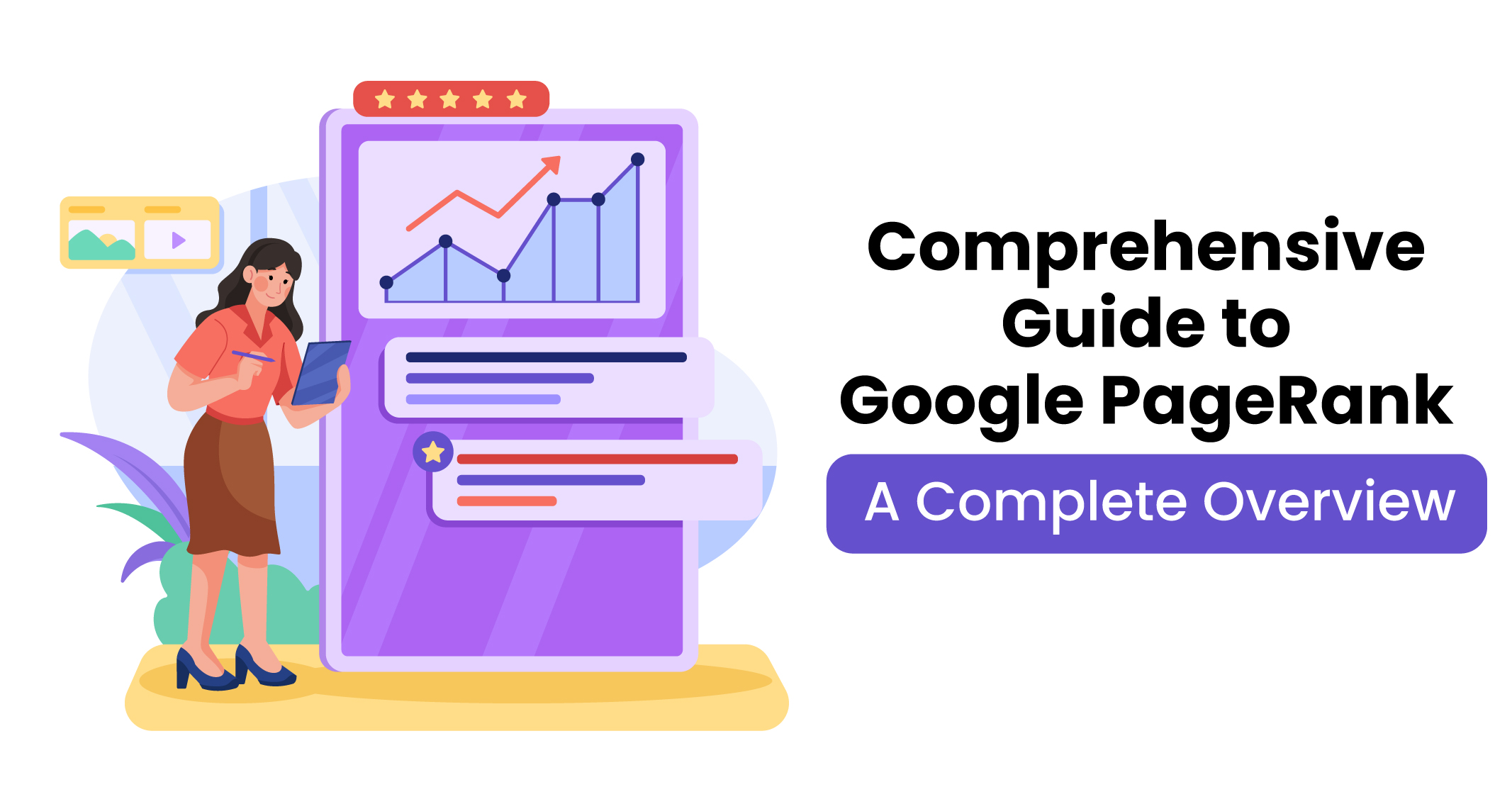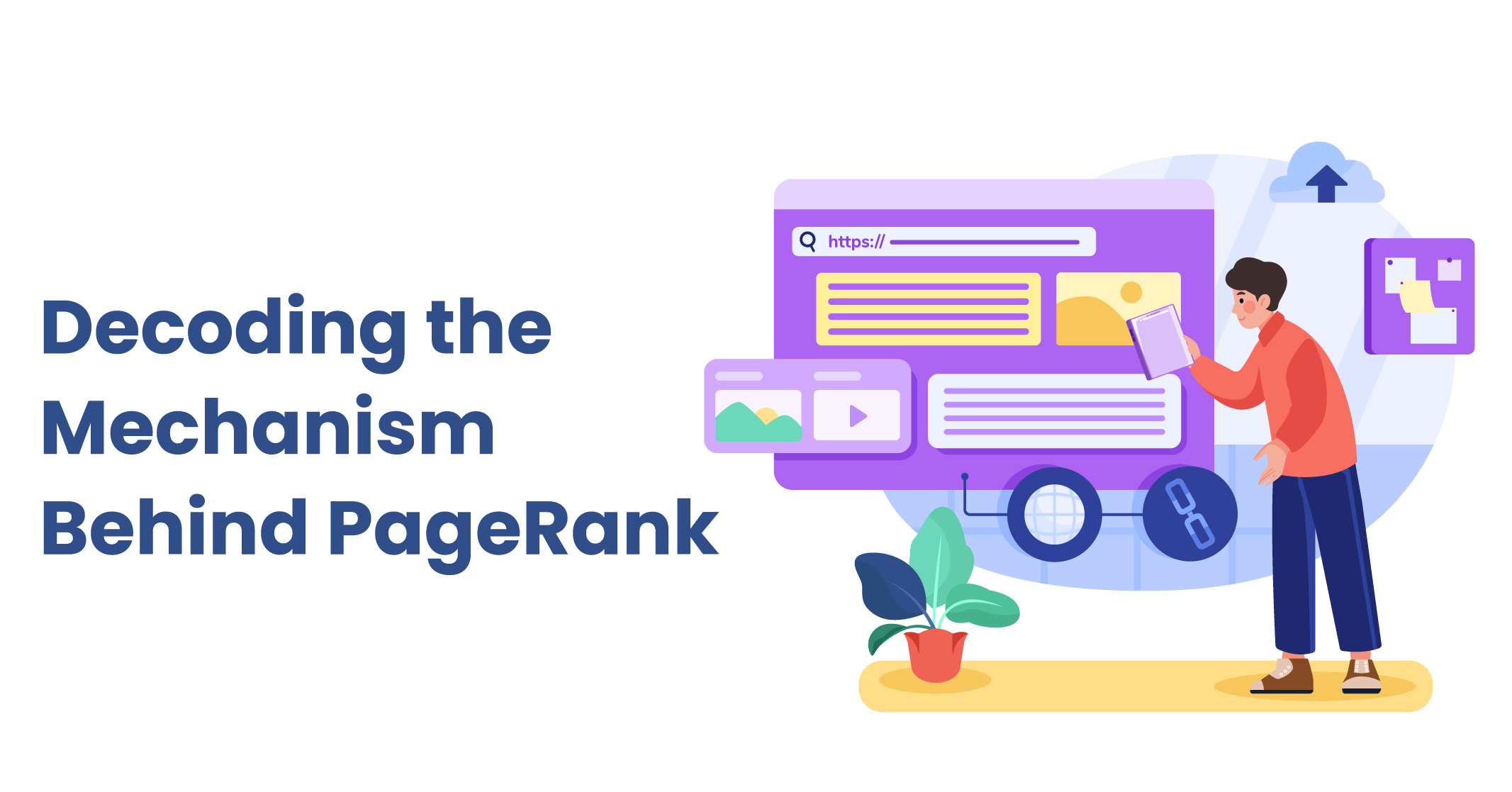I hope you enjoy reading this blog post.
If you want to get more traffic, Contact Us

Click Here - Free 30-Minute Strategy Session
Be quick! FREE spots are almost gone for this Month. Free Quote

Travel back in time, and Google PageRank used to be the go-to SEO metric that was widely discussed and valued. It served as a clear indicator of the effectiveness of your SEO efforts, especially in terms of link building.
However, as we leap forward to the present day, PageRank has faded into the background and is seldom mentioned. This isn’t because it has lost its significance, but rather because it is no longer publicly accessible as a metric.

Click Here – Free 30-Minute Strategy Session
Be quick! FREE spots are almost gone for this Month
In this comprehensive guide, we will delve into every essential aspect you should be aware of regarding the Google PageRank algorithm. We will explore its intricacies, its impact on search rankings, and how it continues to shape the SEO landscape.
PageRank, a well-known algorithm developed by Google, evaluates the significance of webpages based on the links directed towards them. The fundamental principle is that authoritative pages attract more links, leading to higher rankings in search results. Particularly, if these links originate from popular pages with high PageRank scores themselves.
Previously, SEO professionals had access to the PageRank scores of webpages through the Google Toolbar. The scoring system ranged from 0 (PR0) for lower-quality pages to 10 (PR10) for the most authoritative ones.
Notably, PageRank operates on a logarithmic scale, specifically believed to have a logarithmic base of five. This implies that each incremental increase signifies a fivefold rise in importance. For instance, a PR4 page would be considered 25 times more important than a PR2 page, diverging from a linear scale.
SEOs were captivated by this metric since PageRank is transferable between pages through links. Consequently, a website can enhance its authority by receiving links from other websites with higher PageRank scores. In essence, PageRank, which flows through interconnected websites via links, significantly contributes to improved search rankings. The algorithm revolves around the concept that a page is deemed important if it receives links from other important pages.
Learn More: What is SERP?
Let’s explore the history of Google PageRank in a more reader-friendly and concise manner, while incorporating the provided keywords.
Google PageRank: A Journey Through History
In April 1998, Larry Page and Sergey Brin, the founders of Google, introduced PageRank as an algorithm that measured webpage importance based on incoming links. This groundbreaking concept was outlined in their influential paper titled “The Anatomy of a Large-Scale Hypertextual Web Search Engine.”
The first PageRank patent was filed in September 1998, forming the foundation for Google’s algorithm to determine webpage significance. The underlying idea was simple yet revolutionary: pages with more incoming links from reputable sources would be considered more important and rank higher in search results.
Google’s journey continued with the launch of the Google Toolbar in December 2000. This marked a crucial milestone in PageRank history as it allowed users to view the PageRank score of any webpage. SEO professionals quickly became obsessed with increasing PageRank, considering it a means to improve their website’s search rankings. This led to practices like buying links and placing them unnaturally and in bulk, aiming to manipulate PageRank.
An updated PageRank patent was filed by Google in 2006. This patent introduced the concept of “seed sites” within trusted seed sets, which acted as high-quality pages providing web connectivity to non-seed pages. Although not explicitly referred to as an updated version of PageRank, this new patent played a role in ranking webpages based on their proximity to the seed set.
However, Google decided to retire the PageRank Toolbar in 2016 after almost 15 years of service. The public-facing PageRank score had become a target for manipulation, leading to distorted rankings. Google recognised the need to eliminate this public metric to prevent SEOs from exploiting it for their advantage.
Although the PageRank Toolbar was discontinued, PageRank itself remains an integral part of Google’s ranking algorithm. It continues to assess webpage authority and influence search rankings. However, PageRank is no longer publicly accessible, making it challenging to gauge a webpage’s authority solely based on its PageRank score.
In conclusion, the history of Google PageRank highlights its significance in shaping the search engine’s algorithm. While the public-facing PageRank Toolbar has been retired, the concept of PageRank metrics continues to play a vital role behind the scenes, ensuring that authoritative pages still hold prominence in search results.
Learn More: Tips for Enhancing Your Google Rankings Safely

When the initial patent was filed and Google’s early algorithm was developed, PageRank operated on the principle that a link from one website to another served as a vote indicating trust and authority. In essence, the more links a page received, the greater the level of trust and the higher its ranking potential.
However, as explained in the original paper, PageRank went beyond simply counting links and introduced a system that accounted for the varying authority of linking pages. This involved normalising the impact of links based on the number of links present on a page.
In other words, a link is not just a straightforward vote; the authority of the linking page is considered. A link from a page with a PageRank score of 6 (PR6) carries more weight and authority compared to a link from a page with a PageRank score of 2 (PR2).
This transfer of PageRank influence between pages is often referred to as “link juice” in the SEO community. It signifies the flow of authority and ranking power passed through links from one page to another.
Learn More: Internal Links SEO
PageRank is influenced by various factors, each playing a role in determining a page’s ranking.
Let’s explore some of these factors:
Remember, understanding these factors and their current relevance in SEO is crucial for effective optimisation strategies.
Learn More: No Follow Links Vs Follow Links
Although the public-facing PageRank toolbar is no longer available, it doesn’t mean that the PageRank algorithm has become obsolete. In fact, in 2017, Google’s Gary Illyes confirmed via Twitter that the algorithm still utilises PageRank.
The PageRank algorithm, which evaluates the importance and authority of webpages based on their link profiles, continues to play a crucial role in Google’s ranking system. While Google no longer displays PageRank scores publicly, it remains an integral part of their complex ranking algorithm.
In addition to PageRank, Google considers various other factors when determining search engine result page (SERP) rankings. These factors include relevant content, website quality, user experience, and the presence of SERP features.
SERP features are special elements that appear within search results, such as featured snippets, knowledge panels, and image carousels. Optimising your website to target specific SERP features can enhance visibility and attract more organic traffic.
While the precise details of the PageRank algorithm are kept confidential, understanding its importance in conjunction with other ranking factors can help inform effective SEO strategies to improve your website’s visibility and overall performance in search results.

While PageRank remains a prominent algorithm used by Google, there is no publicly available metric that directly mirrors its functionality. PageRank has evolved over time, and Google now utilises a wide range of ranking factors to determine the relevance and authority of webpages.
While no single metric can fully replicate PageRank, there are alternative metrics and approaches that can be valuable in assessing a website’s authority and visibility.
One such alternative is Domain Authority (DA), developed by Moz. DA provides a score from 0 to 100, indicating the overall authority and credibility of a website. It takes into account factors such as the quantity and quality of backlinks, website age, and content relevance. Although it is not a direct replacement for PageRank, DA can be useful for comparing the relative authority of different websites.
Another alternative is Ahrefs’ Domain Rating (DR). DR is a similar metric that measures the strength of a website’s backlink profile on a scale of 0 to 100. It considers factors such as the quantity and quality of referring domains, linking domains, and the diversity of anchor texts. While it doesn’t provide a direct replica of PageRank, DR offers insights into the authority and backlink profile of a website.
It’s important to note that these alternative metrics, including DA and DR, are proprietary and not used by search engines like Google directly in their algorithms. They are designed to provide a relative comparison between websites and assist in assessing their authority and potential ranking power.
Ultimately, while no single metric can fully replace PageRank, using a combination of metrics, along with a comprehensive understanding of modern SEO practices and factors that influence search engine rankings, can help marketers and website owners gauge the authority and visibility of their websites in the ever-evolving landscape of search engine optimisation.
To enhance your PageRank, it is essential to focus on enhancing your internal links and acquiring high-quality backlinks for your website. Implementing effective link building strategies can significantly contribute to your SEO efforts.
Some strategies to consider include:
By incorporating these link building strategies into your overall SEO strategy, you can improve your website’s authority, visibility, and ultimately enhance your PageRank.

LEAVE A REPLY